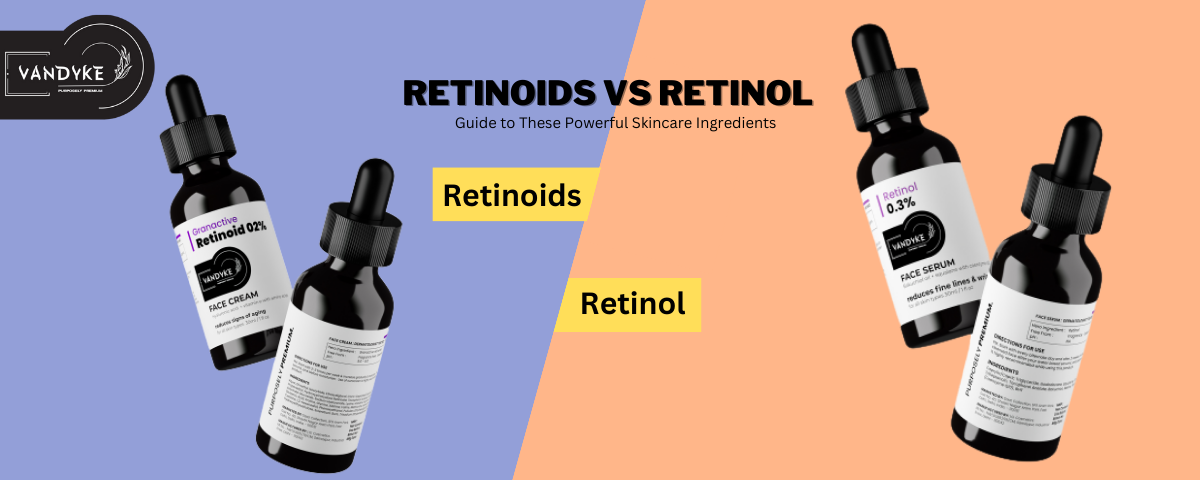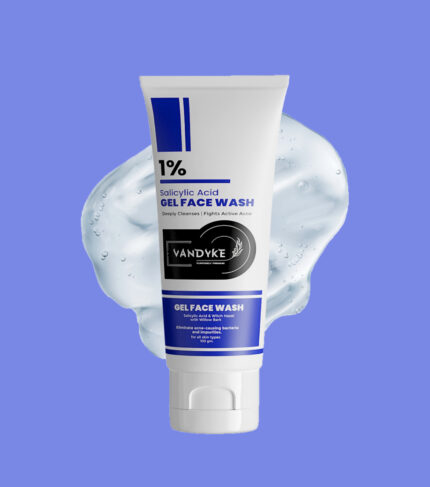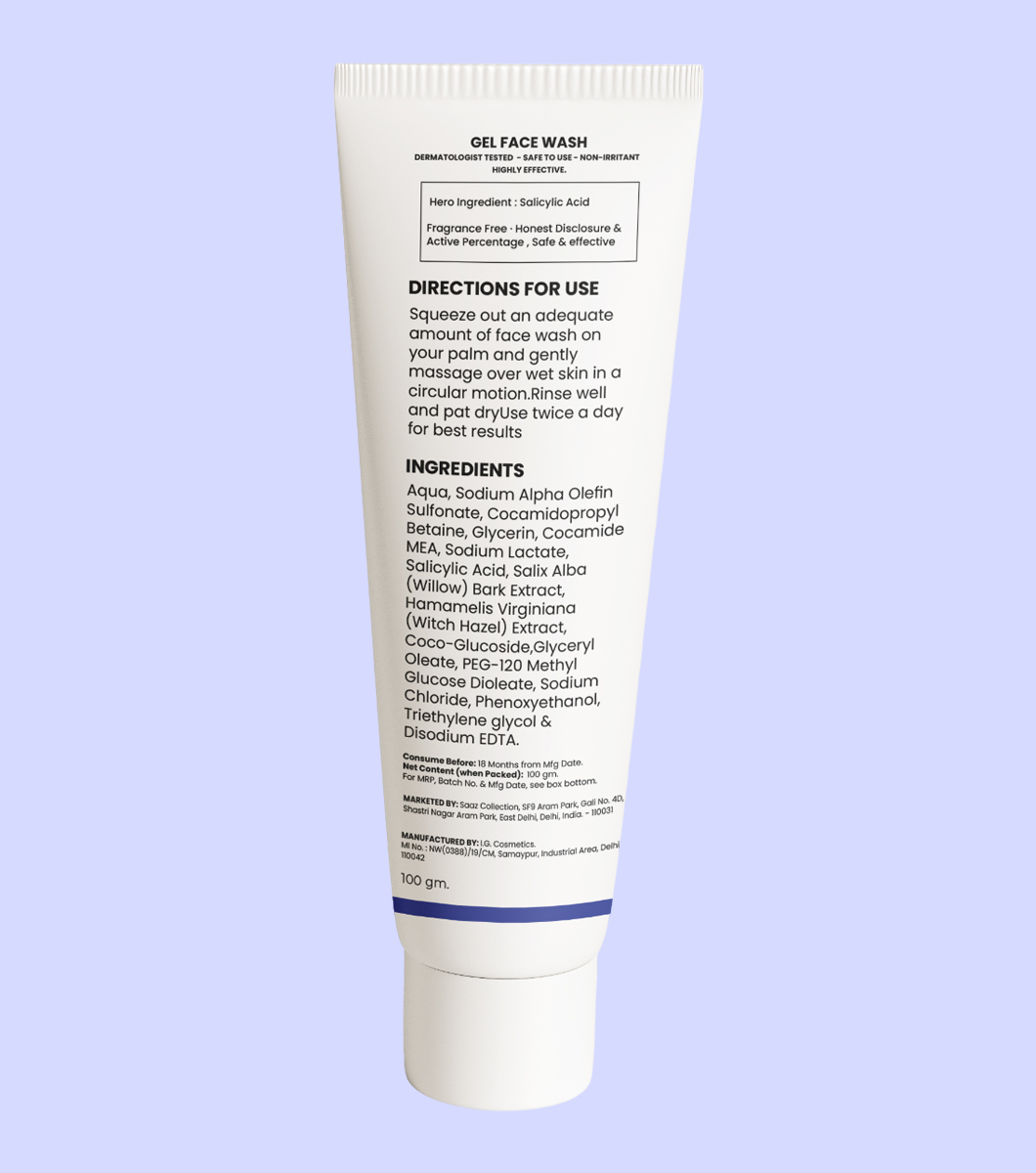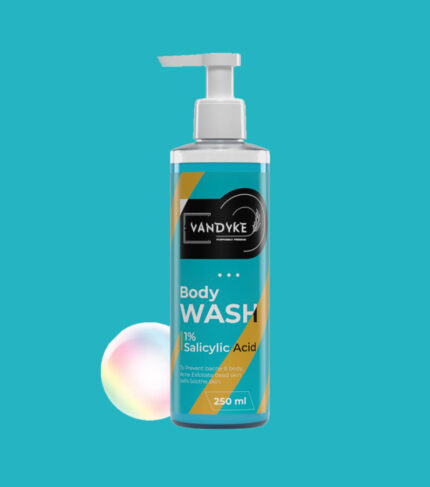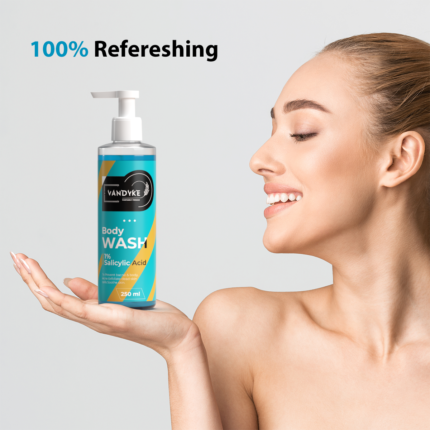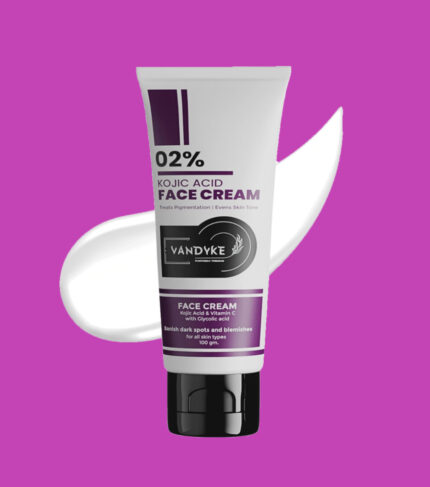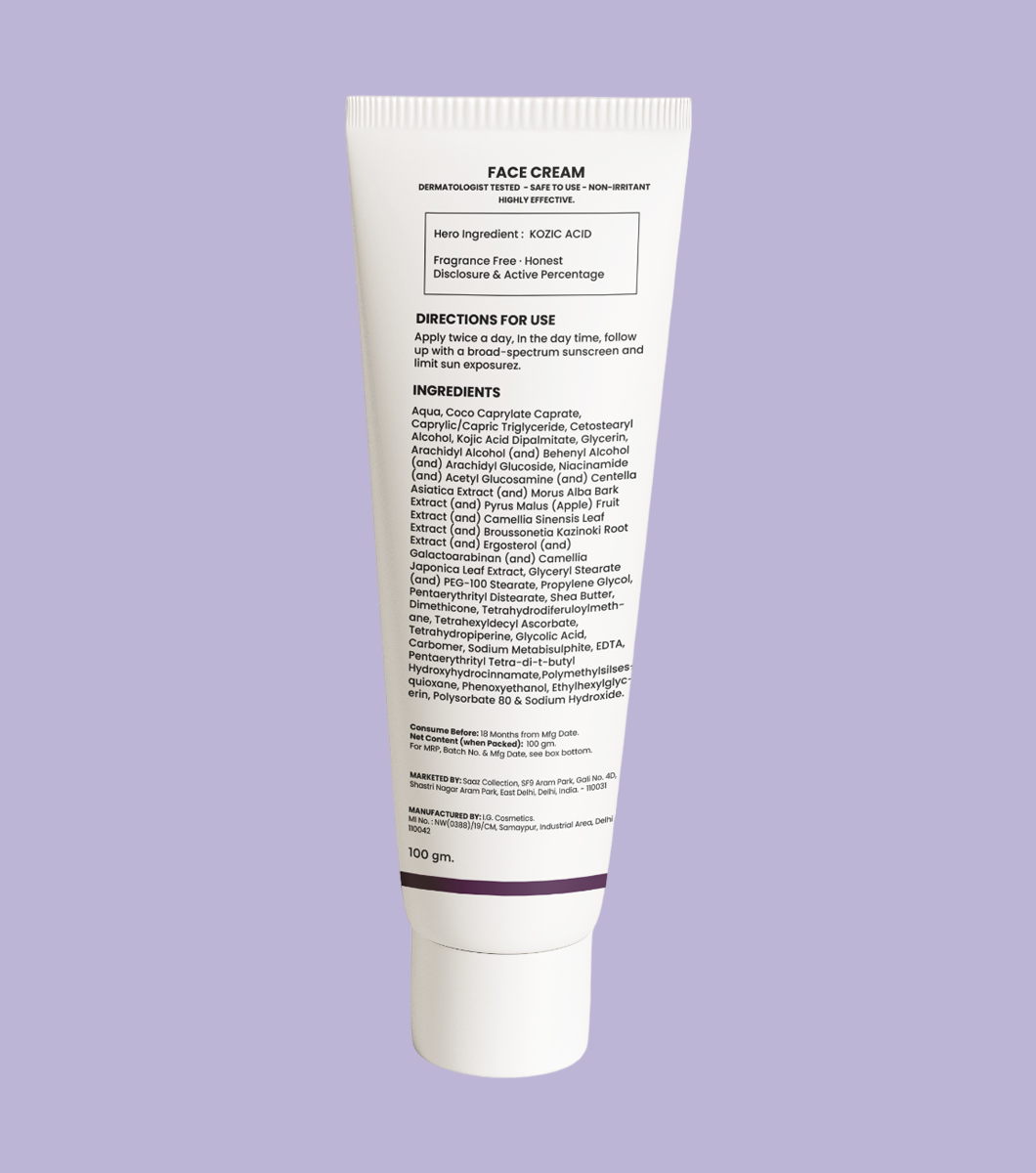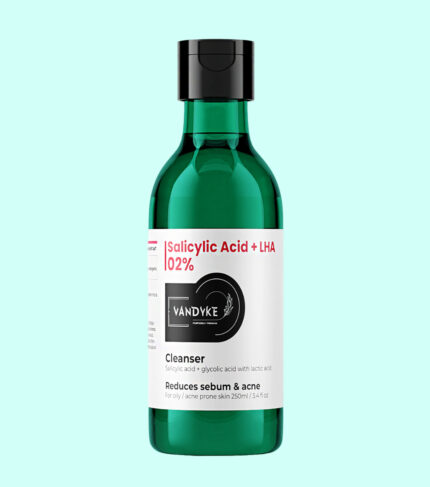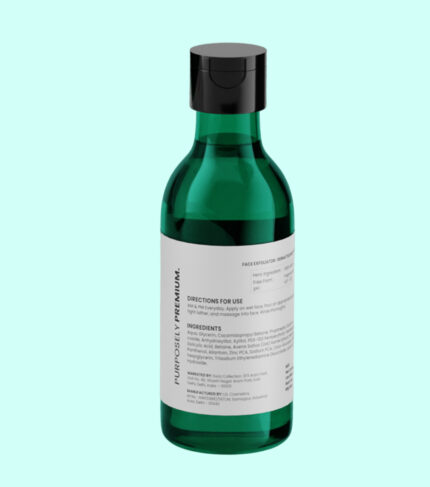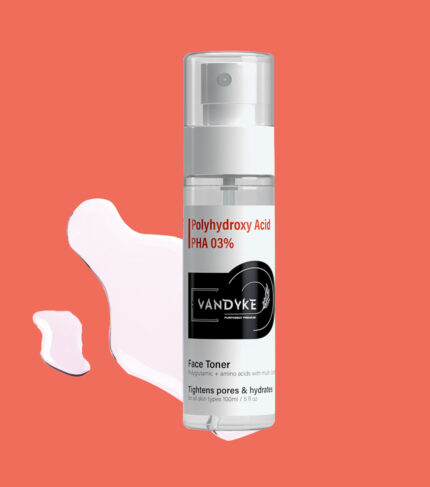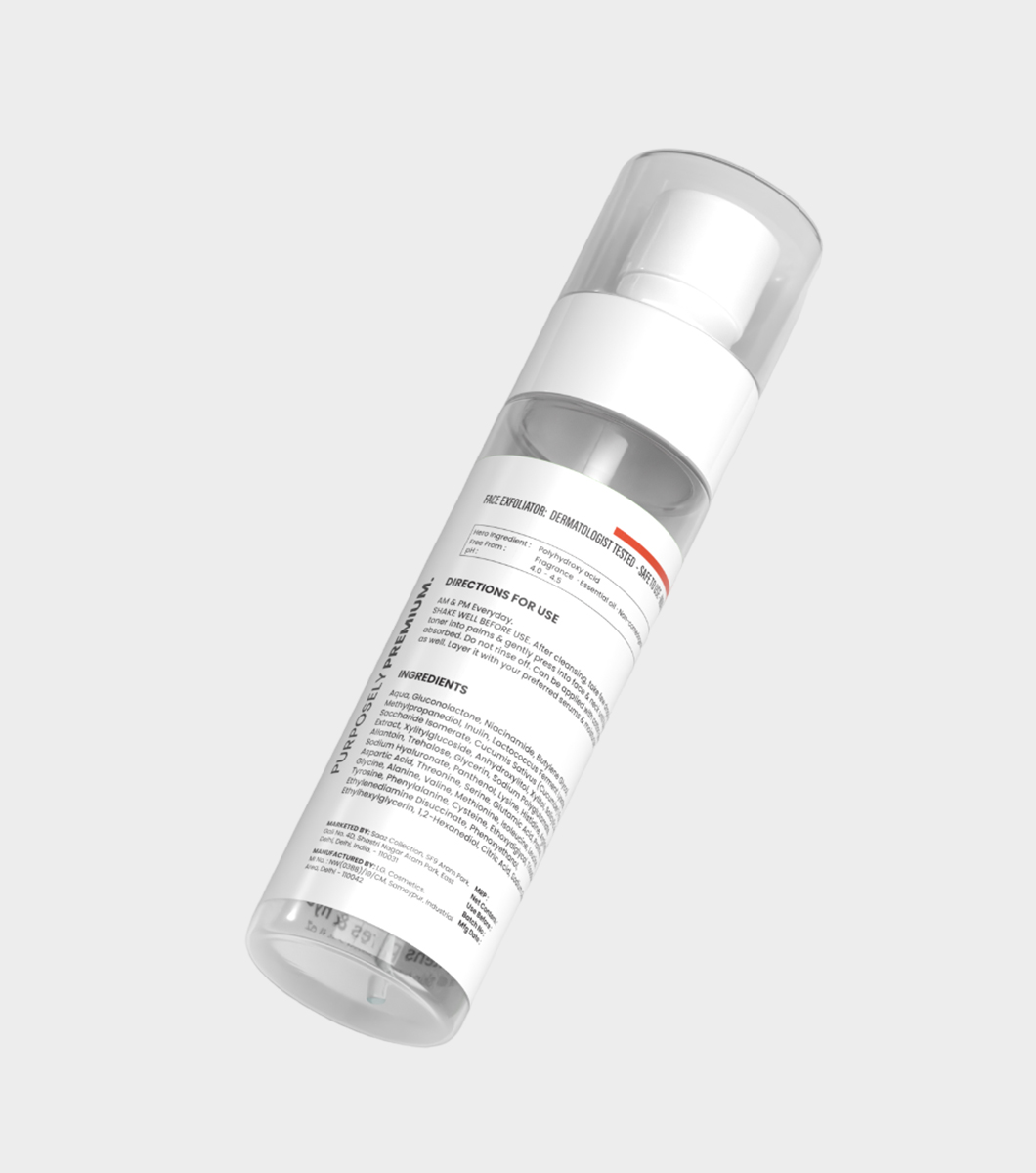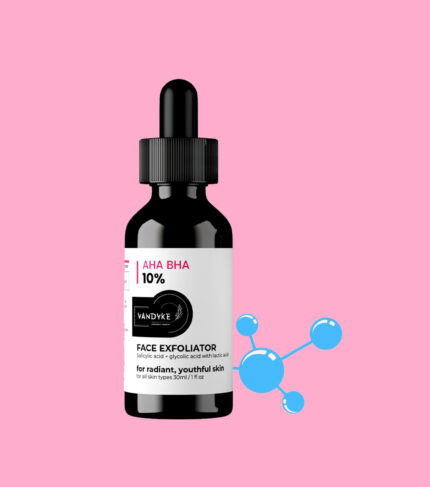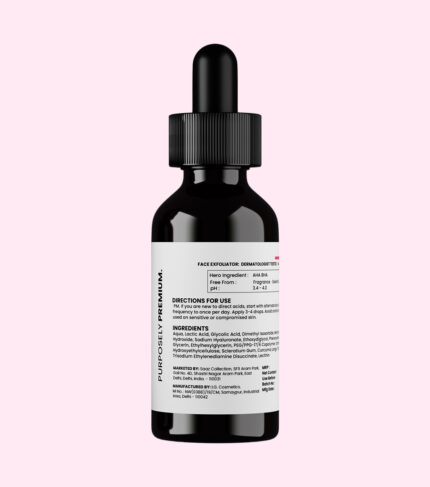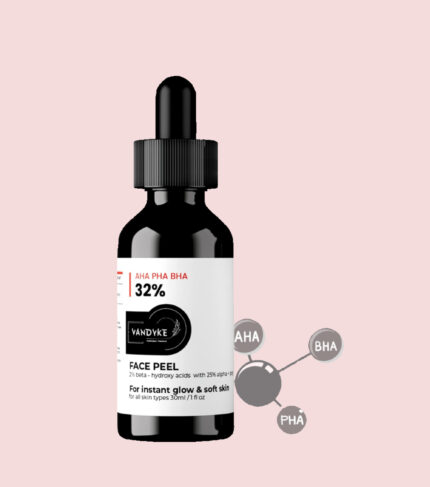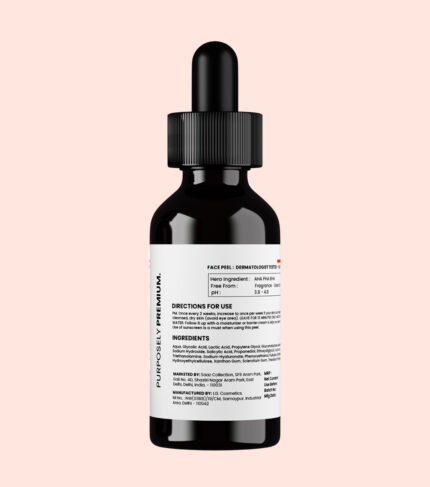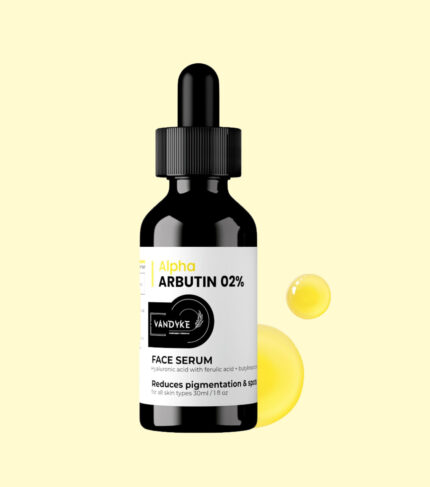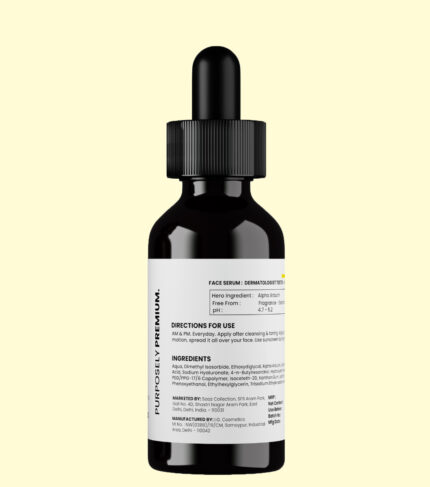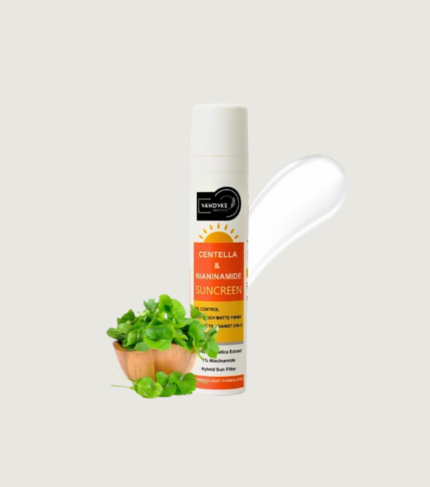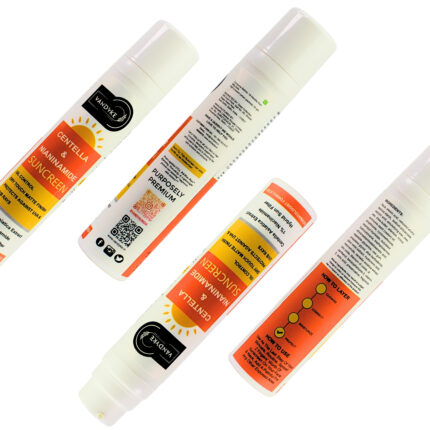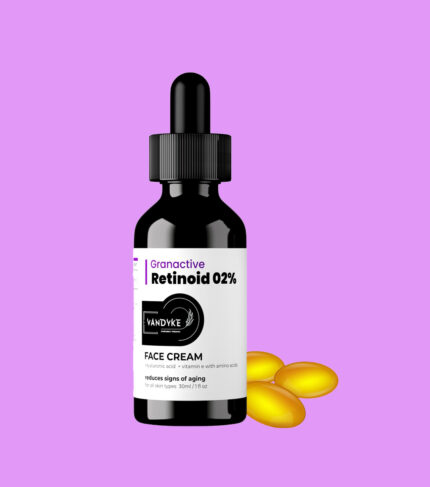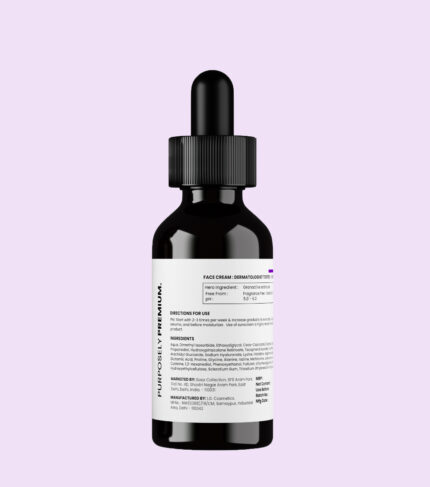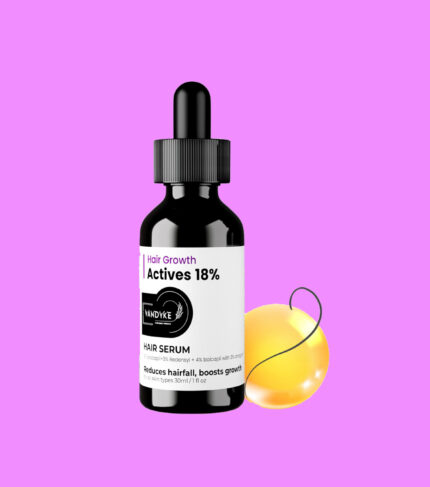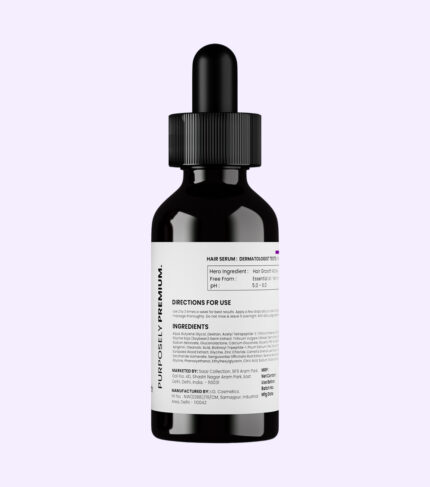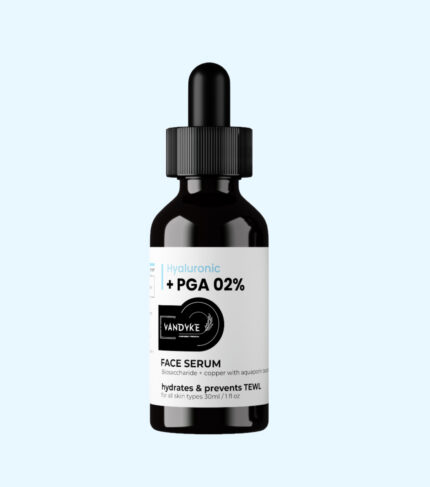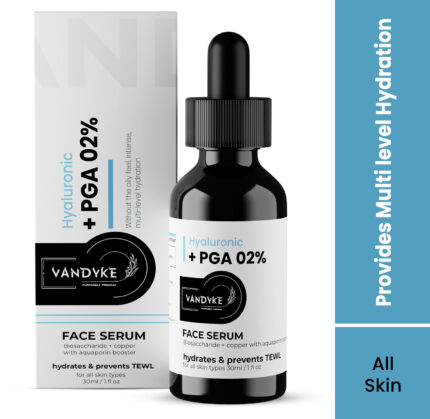Retinoids vs Retinol Powerful Skincare Ingredients Introduction
Welcome to “Retinoids vs Retinol: A Comprehensive Guide to These Powerful Skincare Ingredients.” If you’ve ever been curious about the world of skincare and the remarkable benefits that retinoids and retinol can offer, you’ve come to the right place. In this comprehensive guide, vandyke will delve into the fascinating realm of these skin-transforming compounds derived from vitamin A. Whether you’re seeking to address acne, wrinkles, hyperpigmentation, or simply want to enhance your overall skin health, this guide will provide you with a thorough understanding of retinoids and retinol, their applications, differences, and tips for effective usage. Join us on a journey to unlock the secrets to radiant and youthful skin through the power of retinoids and retinol.
What are Retinoids?
Retinoids, a family of compounds derived from vitamin A, are renowned for their remarkable skin-transforming properties. These potent substances are typically available only through prescription, making them a trusted choice for dermatologists and skincare professionals seeking to address a variety of skin concerns.
How effective are Retinoids?
Retinoids are celebrated for their unparalleled potency in the realm of skincare. They owe their effectiveness to their ability to penetrate the skin’s layers, reaching deep into the dermis. Here, they exert their influence on cellular processes, bringing about a host of benefits. While there are several types of retinoids, prescription-strength variants, such as tretinoin (Retin-A) and isotretinoin (Accutane), are the most robust and are often reserved for cases of severe acne and more complex skin conditions.
Applications in Severe Acne Treatment
One of the most well-known applications of prescription retinoids is in the treatment of severe acne. Acne, a common skin condition characterized by clogged pores, inflammation, and the formation of pimples, can be particularly distressing. Prescription retinoids work by accelerating skin cell turnover, preventing the formation of new comedones (clogged pores), and reducing inflammation. This triple-action approach can help individuals suffering from severe acne achieve clearer, smoother skin.
Benefits of Retinoids Other than Acne Treatment
While acne treatment is a prominent use, prescription retinoids have a more extensive range of applications. They are instrumental in addressing various skin concerns, including:
- Wrinkles and Fine Lines
Retinoids stimulate collagen production and promote skin renewal, making them a valuable tool in the fight against signs of aging like wrinkles and fine lines.
- Hyperpigmentation
These compounds can fade hyperpigmentation, such as age spots and sun damage, by inhibiting the production of excess melanin.
- Skin Texture
Retinoids enhance skin texture by smoothing rough patches, diminishing the appearance of pores, and reducing surface irregularities.
- Acne Scarring
They can help fade acne scars over time, promoting a more even skin tone.
Types of Retinoids
Retinoids, derived from vitamin A, come in various forms, each with its own unique properties and applications. Understanding the differences between these types can help individuals and healthcare professionals select the most suitable option for specific skincare needs. Here are some of the key types of retinoids:
Tretinoin (Retin-A, Atralin)
- Description
Tretinoin is one of the most well-known prescription retinoids and is available under
various brand names, including Retin-A and Atralin.
- Properties
It’s known for its potent anti-aging properties and its effectiveness in treating acne. Tretinoin stimulates collagen production, promoting smoother skin and reducing the appearance of fine lines and wrinkles.
- Uses
Tretinoin is commonly prescribed for acne treatment and as an anti-aging solution.
Adapalene (Differin)
- Description
Adapalene is a topical retinoid available under the brand name Differin.
- Properties
It’s known for its effectiveness in treating acne by preventing the formation of new comedones (clogged pores). It is generally milder than tretinoin, making it suitable for those with sensitive skin.
- Uses
Adapalene is primarily used for acne treatment and may be recommended for individuals with mild to moderate acne.
Tazarotene (Tazorac)
- Description
Tazarotene is a prescription retinoid available as Tazorac.
- Properties
Tazarotene is effective for treating acne and various skin conditions, such as psoriasis and certain types of hyperpigmentation. It is more potent than some other retinoids and may cause more skin irritation.
- Uses
Tazarotene is used in the treatment of acne, psoriasis, and conditions where skin cell turnover needs to be regulated.
Isotretinoin (Accutane)
- Description
Isotretinoin is a potent oral retinoid medication available under the brand name Accutane.
- Properties
It’s known for its ability to effectively treat severe and persistent acne. Isotretinoin reduces the size and activity of sebaceous glands, leading to a significant reduction in acne lesions.
- Uses
Isotretinoin is primarily prescribed for severe, cystic acne that hasn’t responded well to other treatments. It’s often considered a last resort due to potential side effects and requires close medical supervision.
What is Retinol?
Retinol, often dubbed the “gentler cousin” of prescription retinoids, is a skincare superstar that has gained immense popularity for its ability to rejuvenate and improve the skin. Unlike prescription retinoids, retinol is available over-the-counter, making it more accessible to a broader audience. While it may be less potent, it remains a highly effective skincare ingredient.
The Origins of Retinol
Retinol is part of the retinoid family, which, as mentioned earlier, is derived from vitamin A. It’s a milder variant when compared to prescription-strength retinoids like tretinoin and isotretinoin. The beauty of retinol lies in its ability to deliver impressive results without the need for a prescription.
Skin Benefits of Retinol
Retinol offers a wide array of benefits for the skin, making it a go-to choice for individuals looking to address various skincare concerns:
- Wrinkles and Fine Lines
Retinol is known for its remarkable anti-aging properties. It encourages collagen production, which helps plump the skin, reduce the appearance of wrinkles, and minimize fine lines.
- Skin Texture
Similar to prescription retinoids, retinol enhances skin texture by promoting cellular turnover. It smooths rough patches, refines pores, and creates a more even skin tone.
- Hyperpigmentation
Retinol can fade hyperpigmentation, such as sunspots and age spots, by inhibiting the production of excess melanin.
- Acne Prevention
While it may not be as potent as prescription retinoids for severe acne treatment, retinol can still help prevent breakouts by keeping pores clear and reducing inflammation.
- Skin Brightening
Regular use of retinol can lead to brighter and more radiant skin by promoting the shedding of dull, dead skin cells.
When incorporating retinol into your skincare regimen, it’s advisable to start with a lower concentration and gradually increase the strength as your skin builds tolerance. Sun protection is also crucial when using retinol, as it can make your skin more sensitive to UV rays.
Retinoid vs Retinol – Which One to Choose?
The choice between retinoids and retinol ultimately hinges on your unique skin requirements and objectives. Determining the right option for your skincare routine involves considering factors such as the severity of your skin concerns and whether you are seeking a prescription-strength solution or an over-the-counter product. Here’s a closer look at how to make an informed decision:
Prescription Retinoids for Skin
- When to Consider
If you’re dealing with severe acne, stubborn skin conditions, or have specific dermatological concerns, consulting a dermatologist may be the best approach. They can prescribe potent retinoids like tretinoin, adapalene, or tazarotene, which are often more effective for targeted treatments.
- Strength
Prescription retinoids are generally more potent and can deliver rapid and dramatic results for skin conditions that require intense intervention.
Prescription Retinol for Skin
- When to Consider
If your skin concerns are more general, such as mild signs of aging, fine lines, or texture irregularities, retinol can be an excellent choice. It’s available over-the-counter and suitable for those looking to enhance their overall skincare regimen.
- Strength
Retinol is less potent compared to prescription retinoids, making it gentler on the skin. However, it still offers substantial benefits.
Comparing Retinoids and Retinol: A Quick Overview
Characteristic |
Retinoids |
Retinol |
| Strength | More potent | Less potent |
| Availability | Prescription only | Over-the-counter |
| Effectiveness | More effective | Less effective, but still effective |
| Side effects | More likely to cause side effects, such as redness, dryness, and flaking | Less likely to cause side effects |
The Core Difference: (Strength)
The primary difference between retinoids and retinol lies in their potency. Prescription retinoids are stronger and typically prescribed for more serious skin concerns, while retinol, available over-the-counter, is milder but still effective for general skin care improvement.
Both options can contribute to healthier, more radiant skin, but it’s important to tailor your choice to your specific needs. Regardless of your selection, incorporating retinoids or retinol into your skincare routine should be done gradually to allow your skin to acclimate, and it’s advisable to use sunscreen during the day due to increased sensitivity to UV rays.
Ultimately, consulting with a dermatologist can provide valuable insights into which option aligns best with your skincare goals and skin type, ensuring that you achieve the best possible results.
How to use Retinoids ?
Retinoids are powerful skincare agents that can deliver remarkable results when used correctly.
- Choose the Right Retinoid Product
Start by selecting a retinoid product that suits your skin type and concerns. Options include prescription retinoids like tretinoin, adapalene, or over-the-counter retinol.
You can use vandyke Granactive Retinoid 02% face serum for your skin.
- Nighttime Application
Retinoids should be applied in the evening because they can make your skin more sensitive to sunlight. Use Granactive Retinoid 02% as part of your nighttime skincare routine.
- Start Slowly
If you’re new to retinoids, begin by using a small amount once a week. This allows your skin to acclimate gradually and reduces the risk of irritation. 02% of Granactive Retinoid will be best for your skin.
- Cleanse Your Face
Start with a gentle facial cleanser to remove makeup, dirt, and impurities from your skin. Pat your face dry with a clean towel.
- Gradual Increase in Frequency
Over time, as your skin becomes accustomed to the retinoid, you can increase the frequency of use. Aim to use Granactive Retinoid 02% two to three times per week, or as directed by your dermatologist.
- Patience Is Key
Retinoids might not provide results right away. To see a noticeable difference in your skin, it might take many weeks to months. Maintain your regimen with patience.
- Consult a Dermatologist
If you experience persistent irritation or have concerns about your retinoid use, consult a dermatologist. They can provide personalized advice and may adjust your retinoid regimen if necessary.
Remember that Granactive Retinoid 02% can be a powerful ally in achieving smoother, more youthful skin, but Granactive Retinoid 02% effectiveness depends on proper usage and patience. Gradually introducing Granactive Retinoid 02% into your skincare routine and using Granactive Retinoid 02% consistently can help you harness the benefits of Granactive Retinoid 02% while minimizing potential side effects.
How to Use Retinols?
Retinols are a valuable addition to your skincare routine for combating signs of aging, fine lines, and other skin concerns. Here’s a comprehensive guide on how to incorporate retinols into your nighttime skincare regimen:
- Choose the Right Retinol Product
Start by selecting a retinol product suitable for your skin type and concerns. You can find retinol products in various concentrations, so consider your skin’s sensitivity and your specific needs.
The best concentration is 0.3% of retinol. You can get this concentration in vandyke retinol 0.3%.
- Nighttime Application
Just like the retinoids, Retinols are also best applied at night since they can make your skin more sensitive to sunlight. Incorporate Retinol 03% into your evening skincare routine.
- Start Slowly
If you’re new to retinol or have sensitive skin, begin by using a small amount once a week. Gradual introduction helps your skin adapt and minimizes the risk of irritation. Use vandyke Retinol 03% for your skin.
- Gradually Increase Frequency
As your skin adjusts, you can increase the frequency of Retinol 03% use. Aim to use Retinol 03% two to three times a week, gradually building up to nightly use if your skin tolerates it.
- Patience and Consistency
Be patient and consistent with your retinol routine. Retinol 03% can take several weeks to months to notice significant improvements in your skin.
- Consult a Dermatologist
If you experience persistent irritation or have specific concerns about your retinol use, consult a dermatologist. They can provide personalized advice and may adjust your retinol regimen if necessary.
Retinols are a valuable addition to your skincare arsenal, and when used correctly, Retinol 03% can help you achieve smoother, more youthful-looking skin. Remember to introduce Retinol 03% gradually into your routine, prioritize moisturization, and always wear sunscreen to maximize Retinol 03% benefits while minimizing potential side effects.
How to Add Retinoids and Retinol Into Your Routine?
Incorporating retinoids or retinol into your skincare routine requires thoughtful consideration and a gradual approach. Here’s a step-by-step guide on how to add retinoids or retinol to your skincare routine, whether you choose one of them:
- Assess Your Skin Needs
Identify your skincare goals and concerns.from now you may already choose your ingredients but the real question is how you can apply it correctly and get the full benefits of them.
- Choose Your Product
Based on your skin type, concerns, and preferences, select a retinoid or retinol product that suits your needs. Consider the product’s concentration and whether it’s available over-the-counter or by prescription. For the retinoids you can choose vandyke granactive retinoids 02% for your skin, or if you choose retinol then the best product for you is retinol 03% face serum.
- Start Slowly
Regardless of whether you choose a retinoid or retinol, begin with a low frequency of use to allow your skin to adapt. Start with once a week application and gradually increase the frequency as your skin tolerates it.
- Nighttime Application
Because they might make your skin more sensitive to the sun, retinoids and retinol should only be taken at night. Add these to your nightly skincare routine.
- Cleanse Your Face
To start your regimen, wash your face gently with a cleanser to get rid of any makeup, grime, and pollutants. Dry off your face using a fresh towel. You may also cleanse your face gently. For your skin, choose Van Dyke Ocean face wash.
- Apply a Pea-Sized Amount
Dispense a pea-sized amount of the granactive retinoid 02% or retinol 03% product onto your fingertip. Using too much can lead to irritation, so a small amount is generally sufficient.
- Dot and Spread
Gently dot the product across different areas of your face, paying special attention to areas of concern. Use your fingertips to evenly spread the product, avoiding the sensitive skin around your eyes.
- Allow for Absorption
After applying the product, allow it to absorb into your skin for a few minutes before proceeding to the next step.
- Follow with Moisturizer
Apply a moisturizer to your skin. This step helps prevent dryness and reduces the risk of irritation. Choose the moisturizer as per your skin type. If your skin is dry you have a moisturizer that will hydrate your skin. Use vandyke marula oil 05% moisturizer for your skin. And if your skin is oily use a gel based moisturizer that does not feel heavy on your skin. Use vandyke sepicalm 03% moisturizer for your oily skin.
- Gradually Increase Frequency
You can increase the frequency of usage as your skin becomes used to the product. Aim for two to three times each week, or as your dermatologist instructs you.
- Daily Sunscreen is Vital
Even on overcast days, always apply sunscreen in the morning. Sunscreen is crucial for protecting your skin against retinoids and retinol, which can make it more sensitive to UV radiation. Apply skin-safe sunscreen with an SPF of 50. Your skin will be well protected as a result.
- Patience and Consistency
Be patient and consistent with your routine. Results may take several weeks to months to become noticeable.
- Consult a Dermatologist
If you experience persistent irritation, have specific concerns, or are unsure about which product to use, consult a dermatologist. They can provide personalized advice and make recommendations based on your skin type and goals.
Adding retinoids or retinol to your skincare routine can be highly effective for achieving smoother, more youthful skin. Remember to introduce these products gradually, prioritize moisturization and sun protection, and seek professional guidance when needed to maximize the benefits while minimizing potential side effects.
Why use retinol or retinoids?
Retinoids and retinol are effective at treating a variety of skin conditions,retinoids and retinol are versatile and powerful skincare ingredients that offer a wide range of benefits. Let’s delve into why they are commonly used to address various skin conditions:
- Acne Treatment
Retinoids and retinol are renowned for their effectiveness in treating acne. They work by reducing the formation of comedones (clogged pores) and preventing new breakouts. By promoting skin cell turnover, they help keep pores clear and minimize the development of acne lesions.
- Melasma and Hyperpigmentation
Both retinoids and retinol are valuable for addressing skin discolorations such as melasma and hyperpigmentation. They inhibit the production of excess melanin (the pigment responsible for dark spots), gradually fading these imperfections and promoting a more even skin tone.
- Fine Lines and Wrinkles
In order to fight the effects of ageing, retinoids and retinol are frequently used by people. These substances promote the synthesis of collagen, which helps to hydrate the skin and lessen the visibility of wrinkles and fine lines. Regular usage can give skin a smoother, younger appearance.
- Rough Skin Texture
Retinoids and retinol can significantly improve skin texture. They work by encouraging the shedding of dead skin cells and promoting the growth of new, healthy skin cells. This leads to smoother, softer skin with a refined texture.
- Minimizing Large Pores
A typical worry is enlarged pores, especially in those with oily skin. By maintaining their cleanliness and minimising obstructions, retinoids and retinol can help minimise the appearance of big pores. This results in a more refined look and a smoother complexion.
- General Skin Health
Even if you don’t have specific skin concerns, incorporating retinoids or retinol into your skincare routine can contribute to overall skin health. They promote skin renewal and maintain a more youthful and radiant complexion.
- Prevention of Future Damage
Using retinoids or retinol can also serve as a preventive measure against future skin damage. By promoting collagen production and cell turnover, they help maintain skin resilience and reduce the likelihood of future wrinkles and skin issues.
In summary, retinoids and retinol are versatile skincare ingredients with a broad spectrum of benefits. Whether you’re dealing with acne, signs of aging, uneven skin tone, or simply aiming to maintain healthy skin, these compounds can play a crucial role in your skincare routine. However, it’s essential to use them consistently, follow proper application guidelines, and introduce them gradually to achieve the best results while minimizing potential side effects.
Tips For Using For Both Retinol and Retinoids
Here are some essential tips for using both retinol and retinoids effectively and safely in your skincare routine:
- Start Slowly and Gradually Increase Frequency
Begin with a minimal frequency of use, such as once a week, and increase gradually as your skin becomes accustomed to the product. This minimizes the risk of irritation and allows your skin to adapt.
- Nighttime Application
Apply retinoids and retinol in the evening as part of your nighttime skincare routine. These products can make your skin more sensitive to sunlight, so using them at night reduces the risk of sun-related issues.
- Use a Moisturizer
Apply a moisturizer after your retinoid or retinol product has absorbed. Moisturizers help combat dryness and reduce potential irritation, keeping your skin comfortable.
- Daily Sunscreen Is a Must
Make wearing sunscreen a daily habit, even on cloudy days. Retinoids and retinol can increase your skin’s vulnerability to UV damage, so sunscreen provides vital protection against sunburn and premature aging.
- Monitor for Side Effects
Keep an eye out for potential side effects like redness, dryness, or flaking. These are common during the initial adjustment period. If side effects persist or become severe, consider reducing the frequency of use or seeking professional advice.
- Consult a Dermatologist
If you experience persistent or severe side effects, have specific concerns, or are unsure about which product to use, consult a dermatologist. They can provide personalized guidance and recommendations tailored to your skin type and goals.
- Patience and Consistency
Achieving the desired results with retinol or retinoids takes time and consistency. Be patient and continue your routine regularly to see improvements in your skin over weeks to months.
- Avoid Combining with Harsh Products
While taking retinol or retinoids, avoid utilising harsh or possibly irritating skincare products, such as those that include alpha hydroxy acids (AHAs) or beta hydroxy acids (BHAs). The likelihood of skin sensitivity and irritation might rise as a result of certain combinations.
Who Can’t Use These Products?
retinoids and retinol are not suitable for everyone. Here’s a more detailed look at who should exercise caution or avoid using these ingredients:
- Pregnant and Breastfeeding Individuals
Pregnant and breastfeeding women should avoid using retinoids or retinol, as there is a risk of potential harm to the developing fetus or infant. It’s crucial to prioritize the safety of the baby, and alternative skincare options should be considered during this period.
- Individuals with Sensitive Skin
People with sensitive skin should approach retinoids and retinol with caution. These ingredients can be harsh and may cause excessive dryness, redness, and irritation in individuals with already sensitive skin. If you have sensitive skin, it’s advisable to consult a dermatologist for personalized guidance or consider lower-strength formulations.
- Skin Conditions Such as Eczema or Psoriasis
Individuals with certain skin conditions, such as eczema or psoriasis, may need to avoid retinoids and retinol. These conditions are characterized by compromised skin barriers and heightened sensitivity. Using these potent ingredients can exacerbate the symptoms and lead to increased irritation.
- Those Using Other Active Ingredients
If you are already using other potent skincare ingredients like alpha hydroxy acids (AHAs) or beta hydroxy acids (BHAs), combining them with retinoids or retinol can increase the risk of irritation. In such cases, it’s essential to consult a dermatologist for guidance on how to incorporate multiple active ingredients safely.
- Individuals with Certain Medications or Allergies
Some medications or allergies may interact with retinoids or retinol, leading to adverse reactions or increased sensitivity. It’s crucial to discuss your skincare routine with a healthcare professional if you are taking any medications or have known allergies.
- Children
Retinoids and retinol are typically not recommended for use in children. Children’s skin is generally more delicate, and these ingredients may be too harsh for their skin.
Before incorporating retinoids or retinol into your skincare routine, it’s essential to consult with a dermatologist or healthcare provider, especially if you fall into any of these categories. They can assess your individual skin type, concerns, and any potential contraindications, providing personalized recommendations for the safest and most effective skin care approach.
What Products Can’t Be Used With Retinoids?
Retinoids and retinol should not be used with other products that can be irritating to the skin, such as benzoyl peroxide, alpha hydroxy acids (AHAs), and beta hydroxy acids (BHAs). You should also avoid using retinoids and retinol with exfoliating products, as this can irritate the skin.
Conclusion
The choice between retinoids and retinol ultimately hinges on your unique skin requirements and objectives. Skin conditions and concerns can be addressed with prescription retinoids or retinol. Prescription retinoids are more potent and effective for severe acne, stubborn skin conditions, or specific dermatological concerns. They can deliver rapid and dramatic results for skin conditions that require intense intervention. Retinol, on the other hand, is milder but still effective for general skin care improvement. Both options contribute to healthier, more radiant skin, but it’s important to tailor your choice to your specific needs. Incorporating retinoids or retinol gradually into your skincare routine is recommended, and sunscreen should be used during the day due to increased sensitivity to UV rays. Consulting with a dermatologist can provide valuable insights into which option aligns best with your skincare goals and skin type.
FAQs
Which is better, retinol or retinoid?
Both retinol and retinoids have their advantages. Retinol is a milder form of Granactive Retinoid 02% and is available over-the-counter, making it more accessible. On the other hand, prescription-strength retinoids are usually more potent and may deliver faster results. The choice between the two depends on your skincare goals and sensitivity. Consulting a dermatologist can help determine which is better for your specific needs.
What is the strongest Retinol 03% or retinoid?
The strength of retinol or retinoid products varies, and prescription-strength retinoids like tretinoin are often considered the strongest. They have higher concentrations and may produce more noticeable results but can also be more irritating. The strength you need depends on your skin concerns and tolerance. It’s advisable to start with a lower strength product and gradually increase as your skin adjusts.
Do retinoids age you faster?
No, Granactive Retinoid 02% do not age you faster. In fact, they are known for their anti-aging benefits. Granactive Retinoid 02% stimulates collagen production, reduces fine lines and wrinkles, and improves skin texture. However, they can initially cause skin dryness and sensitivity, which some may misinterpret as aging effects. With proper use and moisturization, retinoids can help combat the signs of aging.
Is niacinamide a retinol?
No, niacinamide is not a Retinol 03% . Niacinamide is a form of vitamin B3, while retinol is a form of vitamin A. They have different mechanisms of action and skincare benefits. Niacinamide is known for its ability to improve skin texture, reduce redness, and help with enlarged pores, while retinol primarily targets signs of aging and skin renewal.
Which is better: vitamin C or retinoid?
Whether vitamin C or a Granactive Retinoid 02% is better for you depends on your skincare goals. Vitamin C is an antioxidant that brightens the skin, evens out tone, and protects against UV damage. Retinoids, on the other hand, address fine lines, wrinkles, and skin texture. Combining both can provide comprehensive anti-aging benefits and overall skin health.
Is 2% retinoid stronger than 1% retinol?
Yes, a 2% retinoid is typically stronger than a 1% retinol product. Retinol is a milder form of retinoid, so a 2% retinoid would generally be more potent. However, the actual strength can also depend on the specific formulation and other factors, so it’s essential to consider your skin’s tolerance and consult with a dermatologist if you’re uncertain.
Is it bad to use retinoids every day?
Using Granactive Retinoid 02% daily can be effective for some people, but it may also lead to increased sensitivity and dryness, especially in the beginning. It’s often recommended to start with less frequent use (e.g., every other night) and gradually increase frequency as your skin adjusts. Listen to your skin’s response and adjust your usage accordingly to avoid excessive irritation.
What is better than retinoids?
There is no single skincare ingredient that is definitely “better” than retinoids because different ingredients target different skin concerns. Alternatives to retinoids include peptides, antioxidants like vitamin C, and hyaluronic acid, each offering unique benefits. The choice depends on your specific skincare goals.
Can I start with 2% retinoid?
Starting with a 2% retinoid can be suitable for some individuals, especially if they have prior experience with retinol products or have consulted a dermatologist. However, for those new to retinoids, it’s generally recommended to begin with a lower concentration (e.g., 0.25% or 0.5%) to minimize the risk of irritation and allow your skin to acclimate.
Can retinoids damage your skin?
When used correctly, retinoids are generally safe and effective. However, overuse or incorrect application can lead to skin irritation, redness, dryness, and peeling. To avoid potential damage, follow usage instructions, start with lower concentrations, use sunscreen during the day, and consider consulting a dermatologist for personalized guidance.
What happens if I stop using retinol?
If you stop using retinol, your skin will gradually return to its pre-retinol state. The improvements in skin texture, fine lines, and overall clarity that retinol provided may diminish over time. It’s not uncommon for people to continue using retinol or retinoids as part of their long-term skincare routine to maintain these benefits.
Can I use vitamin C with retinol?
Yes, you can use vitamin C with retinol in your skincare routine. Both ingredients offer distinct benefits and can complement each other when applied correctly. However, it’s essential to introduce them gradually and monitor your skin for any signs of irritation. Use vitamin C in the morning and retinol at night, followed by sunscreen during the day, for the best results.
Which fruit has natural retinol?
Rosehip oil is a skincare ingredient derived from the seeds of rosehips and is often considered a natural source of vitamin A, which is a precursor to retinol. However, it’s important to note that the concentration of retinol in natural sources like rosehip oil is much lower than what is typically found in retinol or retinoid skincare products.
Do almonds contain retinol?
Almonds do not naturally contain retinol. Retinol is primarily found in animal-based sources like liver, fish, and dairy products. Almonds are a source of vitamin E, healthy fats, and antioxidants, which can benefit the skin in other ways, such as providing moisture and protection against oxidative stress.
What foods produce retinol?
Foods that produce retinol or contain vitamin A, which is a precursor to retinol, include animal-based sources like liver, eggs, fish, and dairy products. Plant-based sources like sweet potatoes, carrots, and dark leafy greens provide beta-carotene, which the body can convert into vitamin A.
How do you layer retinol at night?
When layering retinol at night, start with a clean face. Apply a gentle cleanser, followed by toner if desired. Allow your skin to dry completely. Then, apply a pea-sized amount of retinol evenly to your face, avoiding the eye area. After waiting for a few minutes to let the retinol absorb, you can follow with a moisturizer to reduce dryness and irritation. Using retinol at night is recommended as it can make your skin more sensitive to UV radiation.
Choose vandyke skin care tips and vandyke skin care products we are;
“Purposely Premium”

